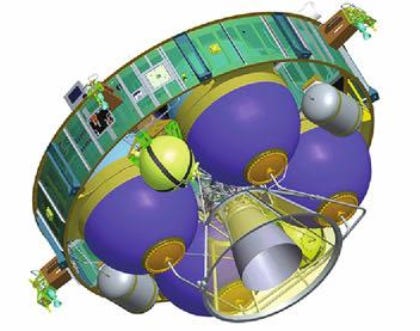A Long March 2C/YZ-1S failed, what now?
This post was originally published on March 14th 2024.
Yesterday at 12:51 pm Universal Coordinated Time, A Long March 2C flying with a Yuanzheng-1S upper-stage failed during flight. The flight had lifted off from the Xichang Satellite Launch Center carrying the DRO-A and DRO-B satellites to a distant-retrograde orbit of the Moon.
This is believed to have been the first failure from one of China state-owned launch providers since a Long March 3B/E suffered a problem with is third-stage back in April of 2020.
Xinhua reported almost a day later that the mission had failed to reach its intended orbit stating the following:
"The first and second stages of the rocket operated normally, while the upper stage encountered an abnormality during flight, causing the satellites to fail to accurately enter the preset orbit."
China Daily reported the same roughly twenty minutes later.
According to both outlets, Xichang Satellite Launch Center is working on a way to safely dispose of the Yuanzheng-1S upper-stage and potentially the two payloads. The satellites may find a way to be used but not in their intended orbit.
The DRO-A and DRO-B satellites would have been active in a distant-retrograde orbit of the Moon, as previously mentioned, and would have communicated with a third satellite in low Earth orbit. The trio of spacecraft would have tested a "single-beam differential relative navigation method" to try and solve one of the challenges of communicating at a Lunar distance, especially for landing and orbiting missions.
The communication method is believed to have been highly reliable once proven. It's unclear if the launch will be re-attempted with two more satellites.
The low Earth orbit satellite, DRO-L, was launched back in early February atop of a Jielong-3 rocket from a sea launch platform. Jielong-3 is also called Smart Dragon 3.
A full paper on the tests and satellites can be found here.
The part of the launch that failed was the Yuanzheng-1S upper-stage, pictured above. Xichang Satellite Launch Center and the China Academy of Launch Vehicle Technology have not said what caused the failure but there are a few options.
The first potential failure mode is the YF-50D engine structurally failing. This could be the engine bell cracking or entirely falling off, similar as to what happened on SLIM. Both of those would lead to a loss of thrust, causing the mission to under-shoot its intended orbit.
Another potential failure mode is one of the fuel tanks bursting. The Yuanzheng-1S has four fuel tanks, two for Dinitrogen tetroxide and two for Unsymmetrical dimethylhydrazine. This could have been an explosive event or a slow leak throughout the flight, if explosive it would have been far into flight due to a lack of reports shortly after launch.
A final potential failure mode is the engine suffering from an ignition failure. This is the least likely as the YF-50D can be lit between two and twenty times, depending on the engine version.
Due to the Xichang Satellite Launch Center reportedly working on disposal of the stage, it is likely the spacecraft is in a high orbit and not near Earth. The periapsis of the Yuanzheng-1S spacecraft may still be low enough to perform a re-entry to destroy the spacecraft.
What happens now?
Due to the first and second stages of the Long March 2C working as planned no actions are likely to be needed to the launch vehicle. This means that the planned Shenzhou-18 mission should proceed unaffected in approximately one month.
The Yuanzheng series of stages are likely to be temporarily grounded while the problem is investigated. Yuanzheng stages have been used twenty-seven times before this with no failures, this was the first.
Teams that worked on DRO-L, DRO-A, and DRO-B may still find a way to test their systems or opt to have the spacecraft kept with the Yuanzheng upper-stage to reduce orbital debris. If the two satellites are kept with the upper-stage the plan for DRO-L is unknown.
What is the Long March 2C?
The Long March 2C is a two-stage rocket that burns Dinitrogen Tetroxide and Unsymmetrical Dimethylhydrazine in both stages.
The Long March 2C is believed to be able to lift 3,850 kilograms to low Earth orbit, 1,900 kilograms to a sun-synchronous orbit, or 1,250 kilograms to geosynchronous transfer orbit.
The first-stage is powered by four YF-21C engines generating 302 tons of thrust burning Dinitrogen Tetroxide and Unsymmetrical Dimethylhydrazine. The exact burn time for the first-stage is unknown outside of China.
The second-stage is powered by one YF-24E engine generating 80 tons of thrust burning Dinitrogen Tetroxide and Unsymmetrical Dimethylhydrazine. Once again the exact burn time of the stage is unknown outside of China.
The Long March 2C is manufactured by the China Academy of Launch Vehicle Technology and weighs 233,000 kilograms when fully fuelled. On the launch pad, the rocket is forty-two meters tall.





